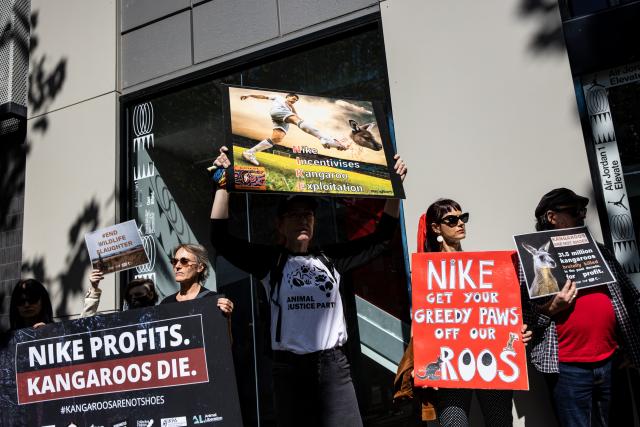
By Callum Ludwig
After years of campaigning from groups such as the Victorian Kangaroo Alliance, major global sports brands Puma and Nike have announced they are scrapping the use of kangaroo leather, known as ‘k-leather’ from their products by the end of 2023.
Due to its toughness, k-leather was used in the upper material football boots such as the Puma King or Nike Tiempo but will now be replaced by a new microfibre technology which Puma claims have outperformed previous boots in touch, comfort, and durability.
President and founder of the Victorian Kangaroo Alliance (VKA), which started out in the Yarra Ranges, Alyssa Wormald said the VKA are ecstatic and finds it heartening to see large corporations making the move in line with their consumer expectations.
“The kangaroo protection movement has a long history and there have been some really impactful wins along the way. The import bans in California and Russia, and the RSPCA rejecting kangaroo pet food were particularly notable advances,” she said.
“It has been pretty incredible to have two big wins with Puma and Nike ditching kangaroo leather alongside import bans pending in the USA and Europe.”
The former Department of Environment, Land, Water and Planning or DELWP (now known as the Department of Energy, Environment and Climate Action or DEECA) has a 2022 Statewide Abundance of Kangaroos in Victoria report, which found that there were an estimated 2,418,000 kangaroos in the state in September and October 2022, predominantly Eastern Grey Kangaroos.
Ms Wormald said the loss of these big retailers will certainly hurt the kangaroo industry, and ending the commercialisation of the slaughter is a key goal.
“We know that there are innovative ways to peacefully coexist with wildlife, but as long the commercial industry exists there is no incentive for the development and implementation of such methods,” she said.
“We hope that community action and international censure will provide the incentive and political will to do better.”
In Victoria, authorised harvesting of Eastern and Western Grey kangaroos is permitted under the Victorian Kangaroo Harvest Management Plan (KHMP). This followed the Kangaroo Pet Food Trial (KPFT) held from 2014 to 2019 where under the Authority to Control Wildlife (ATCW) system, landholders could kill and dispose of kangaroos themselves. According to the KPFT Evaluation report, there was a 250 per cent increase in kangaroos killed in the state, which totalled over one million kangaroos during that time. The report found the increased number of kangaroos approved for control ‘may not only compromise the aim of reducing waste, but could also threaten the sustainability of kangaroo populations in future years.’
President of the Kangaroo Industry Association of Australia (KIAA) Ray Borda said in a statement that Nike changed their direction some time ago in 2021, as did Puma.
“From our perspective, some of these materials decisions can be a move towards new synthetic alternatives rather than a move away from Kangaroo. We have always seen shifts in and out of kangaroo and other leather over time by various brands and across various products,” he said.
“These relationships don’t underpin the industry – we have other shoe manufacturers that have increasing demand and recognise the environmental benefits of kangaroo leather. Kangaroo leather is fast becoming known as an eco-friendly option due to its longevity, biodegradability, and sustainability.”
The KIAA is currently pushing for carbon footprint accreditation for the harvest of kangaroos, highlighting the fact that those kangaroos have one-third the carbon footprint of other animals like cattle and sheep. They have pointed to reduced methane emissions, less water consumption, less impact on grazing lands and ease of capture and contain as key indicators of this.







